A Perceptual Dance Party for Your Eyes
by Lynn Maliszewski May 26, 2011
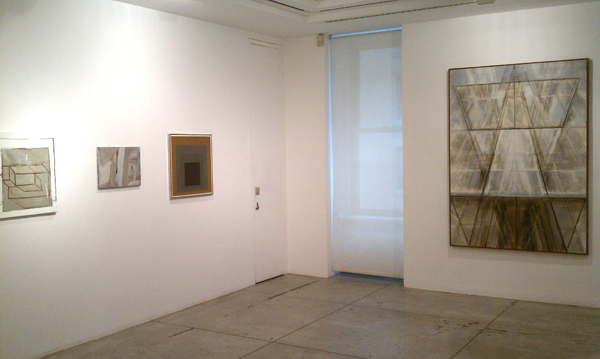
Abstraction is a fickle shapeshifter. Outlines of horses and bulls in caves and geometric markings on ceramic flatware were the earliest embodiment of the craft. Since then, abstraction has travelled through an unbelievable number of incarnations. Jason McCoy Gallery recently took on the challenge of presenting a hiccup’s worth of abstraction from the 20th Century, anticlimactically titled 70 Years of Abstract Painting: Excerpts. The showing was based on the gallery’s strong holding of abstract art, looking to “initiate an unusual dialogue” between past and present.
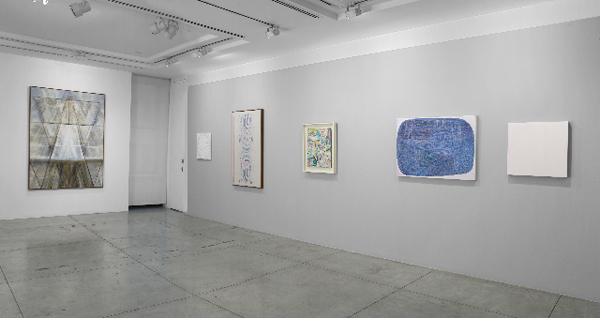
The first of two rooms was spacious yet oddly unapproachable. Artworks masked all four walls, equally spaced at eye level. The slew of beige canvases in the room were rivaled only by nauseatingly pastel pinks and blues, reminding me why I oftentimes dread the trek to fairly humdrum galleries uptown.
An edition of Josef Albers’s Homage to the Square series is prominently displayed. The room also boasts an extremely underwhelming oil painting from Jackson Pollock before he was famous, “Constellation” (1946) from the Accabonac Creek series.
A few lesser known forbearers of New York abstraction like Hedda Sterne and Charles Pollock keep each other company. The techniques are varied yet somewhat traditional and predictable. It was clear from this room that abstract art, as Rudolf Amheim wrote in his Toward a Psychology of Art,“tends to conceal the philosophical, religious, and social meaning of the individual’s life, to destroy the artist’s function in the community, and to reduce the task to a merely ‘aesthetic’ one.”
The juxtaposition of Charles Seliger’s “Choral” (1952) and John McLaughlin’s “#12″ (1964) displayed the former’s East Coast neuroses contrary to the latter’s California cool. The intricate lines of Seliger’s piece fabricates an animate membrane, contradicting the static weight of McLaughlin’s creme monochrome and its landscape of cracks and wrinkles. Although historically stunning the introductory space feels unapproachable. It strays from the imaginative toward intellectual compulsions.
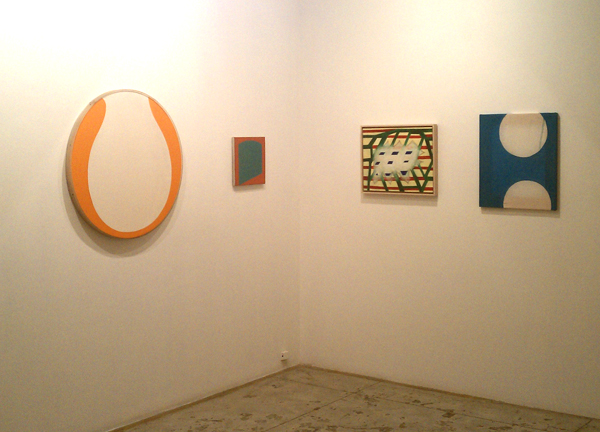
The second room is an explosion of color and texture, with art spread around four walls salon-style. One wall highlighted the extremes of abstraction. The small vignette of Al Held’s “AHE 1725″ (1967), Robert Thiele’s “M-753″ (2010), and Man Ray’s “Untitled (Natural Painting)” (1958/65), in particular, extensively explore the extremes of painting. Held’s smudged lines and skewed perspective highlight his obsession with space. Thiele’s painted tissue box entices the viewer by using 3-D. The remainder of the second room is less visually riveting.
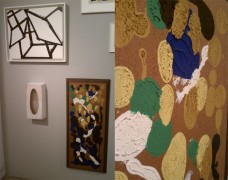
Color and gesture are the most common ways that abstract painters express the emotional and the physical. Willy Bo Richardson’s psychedelic “Three Muses” (2011) is a smooth, high-spirited meld of complimentary colors and Marc Van Cauwenbergh’s disconcerting “Painting I” (2009) consists of frantic brushstrokes created with a muted palate. Both artists capture what Robert Zimmer in “Abstraction in Art with Implications for Perception” characterizes as, “an ordered structure from the formless.”
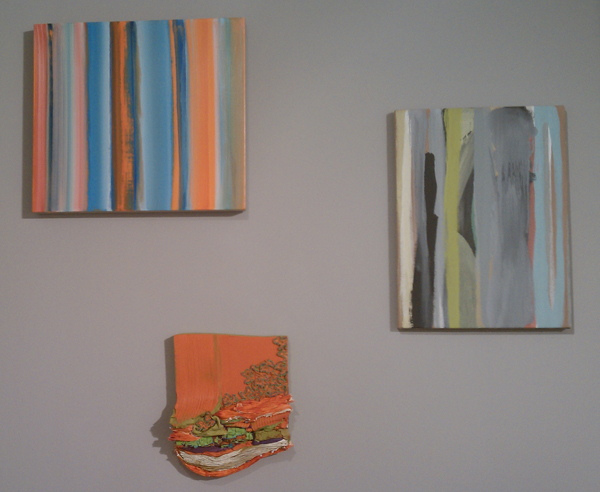
A grouping of four extremely simplistic works hangs on the most spacious wall in the exhibition. Leon Polk Smith’s two canvases make the retina tremble with their flat color and crisp sections. These last four works highlight how paradoxically straightforward yet stimulating abstraction can be, despite having no narrative or “point” to speak of. James McCoy gallery unveiled the importance of a concept in abstraction, be it color theory or explicit tone. Abstract artists determine what dimension their eye should penetrate then invite their audience to the perceptual dance party.
70 Years of Abstract Painting has been extended until tomorrow, Friday, May 27 at the Jason McCoy gallery (41 East 57th Street, Midtown, Manhattan).
original article found here: A Perceptual Dance Party for Your Eyes
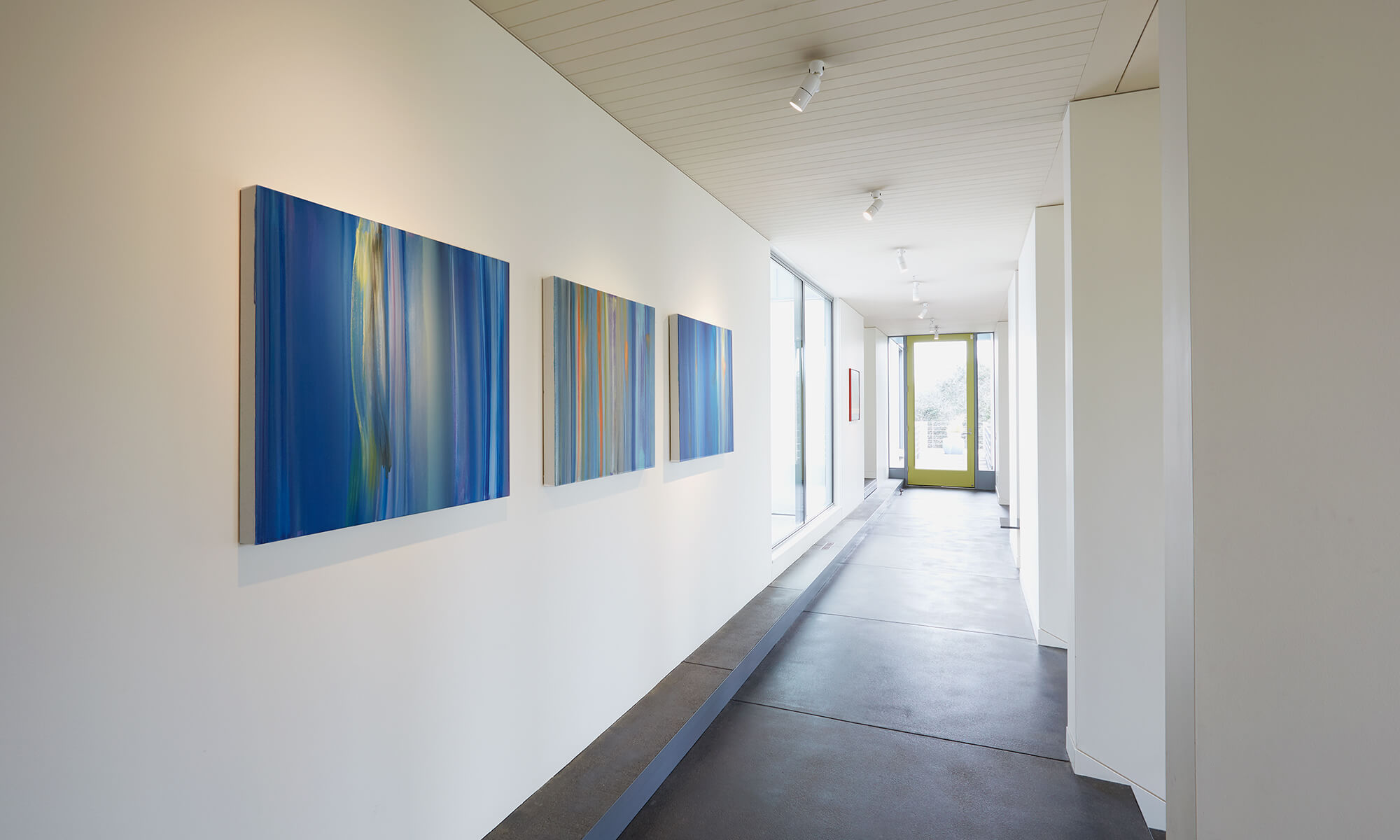

2 Replies to “Hyperallergic: A Perceptual Dance Party for Your Eyes”